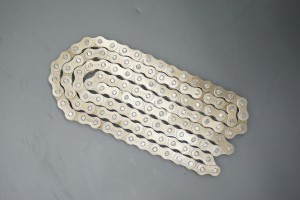Roller chains are the unsung superheroes of industry, transmitting power and motion effortlessly. From automobiles to heavy machinery, these mechanical wonders are an essential part of keeping our world going. But have you ever wondered how precisely a roller chain is assembled? In this blog post, we delve into the fascinating field of roller chain assembly and explore the question of how tightly they can be assembled.
Roller chain assembly involves the complex process of joining individual links to form a continuous loop. Each link consists of two outer plates, two inner plates, a roller and a pin. Pins hold the links together, while rollers enable smooth movement by reducing friction between the chain and the sprockets or gears it interacts with.
Manufacturing Process and Tolerances:
During the manufacturing process, roller chains undergo strict quality control measures to ensure their performance and longevity. However, due to inherent limitations of manufacturing techniques, small degrees of tolerance are to be expected. Tolerance is the allowable deviation from the required specification.
Factors affecting the accuracy of chain assembly:
Several factors affect the accuracy of roller chain assembly:
1. Component Tolerances: Each component of a roller chain, such as plates, rollers and pins, has specific tolerances. Even if each part is manufactured to the tightest possible tolerances, cumulative effects can cause slight deviations in the overall assembly.
2. Manufacturing technology: There are various manufacturing methods for roller chains, including casting, pressing and machining. Each technique has its own level of precision, which can affect the final assembly.
3. Environmental conditions: Roller chains are often assembled in different environments, including varying temperature and humidity levels. These factors affect the expansion and contraction of chain components, which can affect assembly tolerances.
4. Chain Length: Longer roller chains tend to have greater cumulative tolerances due to the increased number of links required. Therefore, longer chains may have slightly greater variation in fit accuracy than shorter chains.
How close can roller chains be assembled?
While it is difficult to provide precise measurements of roller chain assembly accuracy, industry standards are designed to minimize variation. It is not uncommon for roller chains to be assembled with tolerances of 0.1 – 0.3 mm, depending on chain size and application. However, advances in manufacturing techniques and processes continue to push the boundaries of precision assembly even further.
Roller chains are versatile mechanical marvels that are vital in countless industries. While achieving absolute precision in roller chain assembly can be challenging, manufacturers strive to minimize variation through strict quality control measures. By understanding the factors that affect the accuracy of chain assembly, we can appreciate the craftsmanship of these everyday power transmission heroes.
Roller chains keep our world going, and as technology develops, we can expect assembly techniques to become more precise. So, the next time you see roller chain-driven machines, remember the intricate processes involved in their assembly and recognize the part they play in keeping the industrial world running smoothly.
Post time: Jul-10-2023

